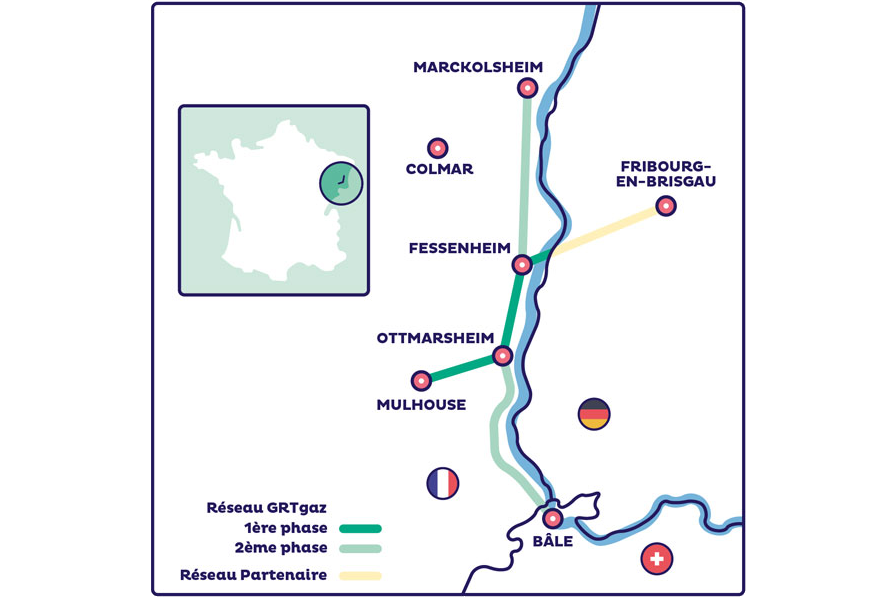RHYn

Description of project
RHYn is a hydrogen transport grid project located in the Grand Est region. On its French side, the grid will cross Mackolsheim - Fessenheim - Chalampé/Ottmarsheim - Mulhouse and Saint Louis. It will be connected to the Terranets bw grid in Germany. Studies are also being conducted for a potential connection with Switzerland. In total, it will extend approximately 100 km, including 60 km of converted gas pipelines.
Hydrogen uses
The purpose of use will mainly be industrial, and enable the decarbonisation of the main industrial companies found along the route, particularly in the chemicals and fertilizer production sector.
The project will also cover mobility uses: road mobility (2 to 4 hydrogen stations planned in the Mulhouse conurbation), air mobility thanks to the connection of the Basel-Mulhouse airport, and river mobility at several ports in the zone.
First stages
- 03/2022: Pre-feasibility study finalised confirming viability of conversion.
- 09/2022: Memorandum of understanding (MoU) signed with Terranets bw (TSO in Baden Württemberg) and bnNETZE (DSO in Baden Württemberg) to study the Franco-German interconnection.
- 01/2023: A memorandum of understanding (MoU) signed with IWB to study the Franco-Swiss interconnection.
- 05/2022: Project integrated into the ZIBaC call for projects.
Next stages
- From 01/2024: Feasibility study.
- 2028: Forecast commissioning date.
Grid sizing
- Diameter: Mainly 400 mm with a few sections of 250 mm and 150 mm.
- Length: Approximately 100 km in total, of which 60 km will come from converted pipes.
- Capacity: 20 GWh/day.
Project’s environmental impact
The pipeline will have the capacity to transport 190,000 tonnes of renewable or low-carbon hydrogen per year, which will thus be integrated into the French and European energy system. This is the equivalent of the production of 1,400 MW of electrolysis and could avert up to 2 million tonnes of CO2 emissions per year.